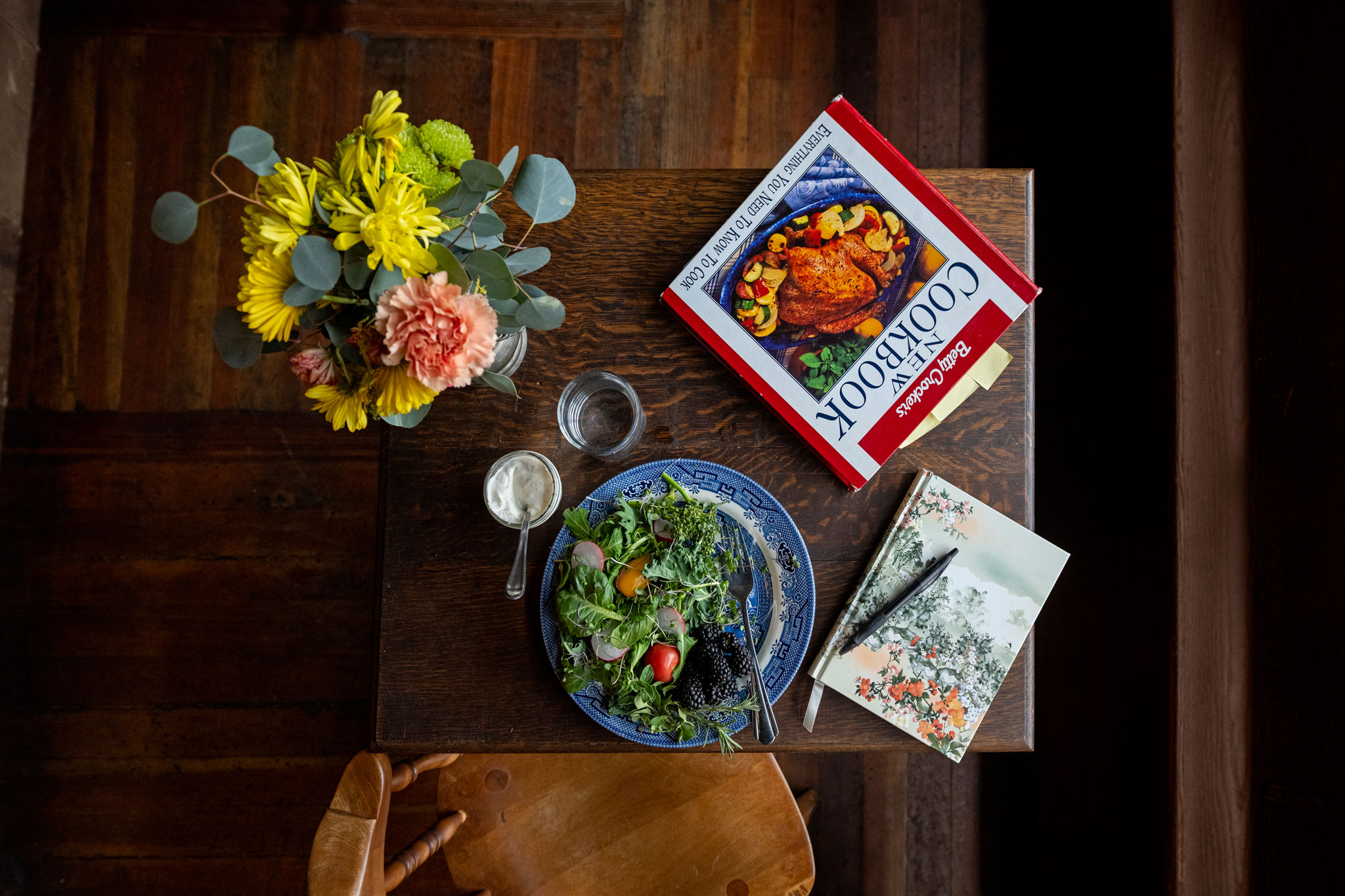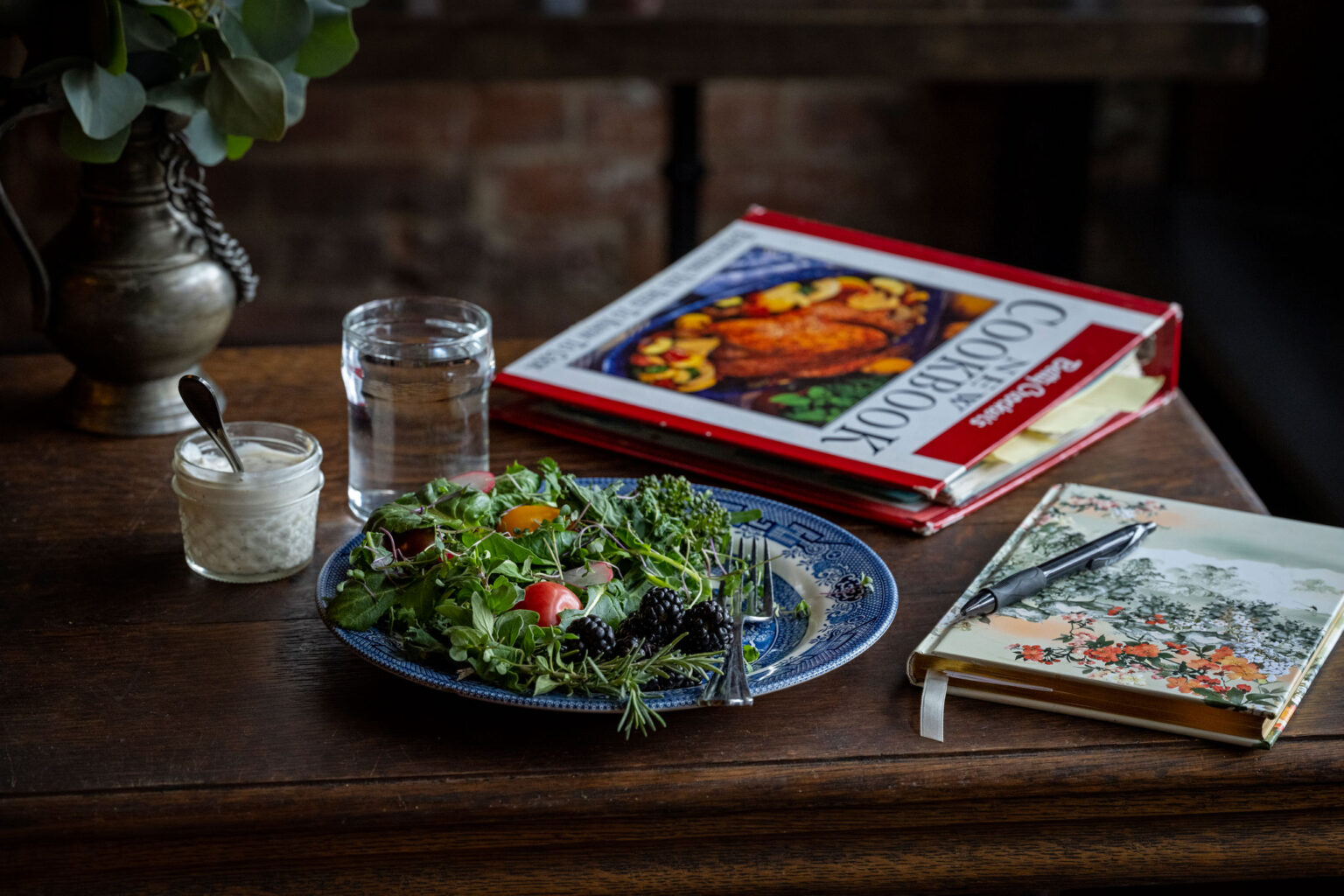Here in the Northwest, almost every gardener plants zucchini, and by the middle of summer, they are so tired of eating it! But the popular squash just keeps propagating and growing bigger. Inevitably, when August arrives, you and your gardener friends are trying to find homes for jumbo courgettes. With a little garden planning, though, you can not only keep up with your zucchini abundance, but you can also keep your palate interested and happy and enjoy the fruit of your labor all the way through winter.
Garden to table gardening is a concept of growing all or a portion of your own produce, while planning your garden around meals and recipes. It takes a little work and organization, and your garden may not produce – or may over produce – what you anticipate. But, if you want to try your hand at a little grocery self-sufficiency, save some money and establish more mindful eating habits, I invite you to put together a garden to table plan as you prep your beds.
The goal is to flip the cycle of recipe-grocery list-shopping basket on its head. Your plan instead starts with what is fruiting in your garden right now. Find recipes that utilize those ingredients, and then fill in the blanks with a shopping list. Your plan may be less “convenient” at first and will challenge your habits, but the more you choose to shop first in your garden, the more money you’ll save and the more creative and satisfying your meals will be.

» Stick with What You Eat
What produce do you buy every week at the grocery store? What do you and your family actually enjoy eating? Can you grow these veggies in your hardiness zone?
When flipping through seed catalogs, it’s easy to get starry-eyed with all the garden possibilities, but will you really eat all those things? Consider your go-to meals and snacks. Your tried-and-true recipes. The dishes you make once a week or every month. Make a list of the veggies, fruits and herbs from those recipes and which ones you use more than others.
Now, go find those seeds in the catalogs. Typically, they note a vegetable’s compatible growing zone, but your local Master Gardener can also provide you with a list of what grows best in your area. Once you know what you’re able to grow, you can plan out your garden space.
[adrotategroup=“1”]
» A Pile of Recipes
Once you have a produce list and garden layout, it’s time to gather your recipes once again and apply a little organization. Perhaps you make a recipe box or start a recipe journal. Either way, I encourage you to organize your recipes – at least the names or descriptions – by veggie instead of meal. Start with core recipes, like five or six. Then add new ones when you find them. Some recipes may have more than one ingredient from your garden. Put those under multiple veggie tabs! Then, when you have an overabundance of summer squash or tomatoes, you already have a variety of recipes to keep your plate interesting.
» Prep to Preserve
If you have a decent size garden, you may end up with overabundance regardless of how coordinated you are. Be prepared to dry, freeze or can excess produce, and enjoy the fruit of your labor throughout the winter months. The best source for these preservation processes and recipes is the USDA’s National Center for Home Food Preservation (nchfp.uga.edu). N
By S. Michal Bennett
Photography By Joel Riner
As Featured In: Home + Garden 2023


